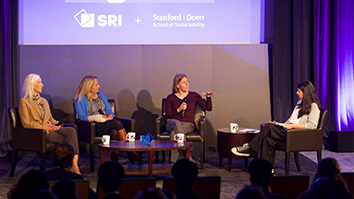Citation
Bransford, J., Vye, N., Stevens, R., Kuhl, P., Schwartz, D., Bell, P., Meltzoff, A., Barron, B., Pea, R., Reeves, B., Roschelle , J., & Sabelli, N. (2006). Learning Theories and Education: Toward a Decade of Synergy. In P. Alexander & P. Winne (Eds.), Handbook of Educational Psychology (Second Edition, pp. 209-244). Mahwah, NJ: Erlbaum.
Introduction
Our goal is to provide an overview of important aspects of human learning that are particularly relevant to educators. Doing so represents an exciting but difficult challenge because human learning is a highly complex topic. Different theories have emerged as researchers have focused on different kinds of learning. Some have focused on the acquisition of skills such as learning to type, write and read (e.g., Anderson, 1981; Bryan & Harter, 1897; LaBerge & Samuels, 1974; National Research Council [NRC], 2000). Others have focused on learning with understanding and its effects on schema formation and transfer (e.g., Anderson & Pearson, 1984, Judd, 1908; NRC, 2000; Wertheimer, 1959). Still others study the emergence of new ideas through interactions with other people and through “bumping up against the world” (e.g., Carey, 2000; Gopnik, Meltzoff, & Kuhl, 1999; KarmiloffSmith & Inhelder, 1974; Papert, 1980; Vygotsky, 1978). Learning theorists have also explored different settings for learning—including preschool, school, experimental laboratory, informal gathering spots, and everyday home and workplace settings—and they have used a variety of measurements of learning (e.g., neurobiological, behavioral, ethnographic). Furthermore, learning theorists work at time scales that range from milliseconds of processing time to life-span and even intergenerational learning (e.g., Lemke, 2001; Newell, Liu, & Mayer-Kress, 2001). Making sense of these different perspectives, and giving each their just due, is a challenging task.


